The world of ancient villages
Dagestan is not only picturesque mountains with impressive canyons and fantastic waterfalls, but also hidden in them villages, which are considered the highest in Europe. They stand alone, surrounded by mountain peaks, often isolated from the outside world by deep valleys. Many of them have already been abandoned, others continue to live their normal lives and function as cultural and historical complexes.Gunib plateau
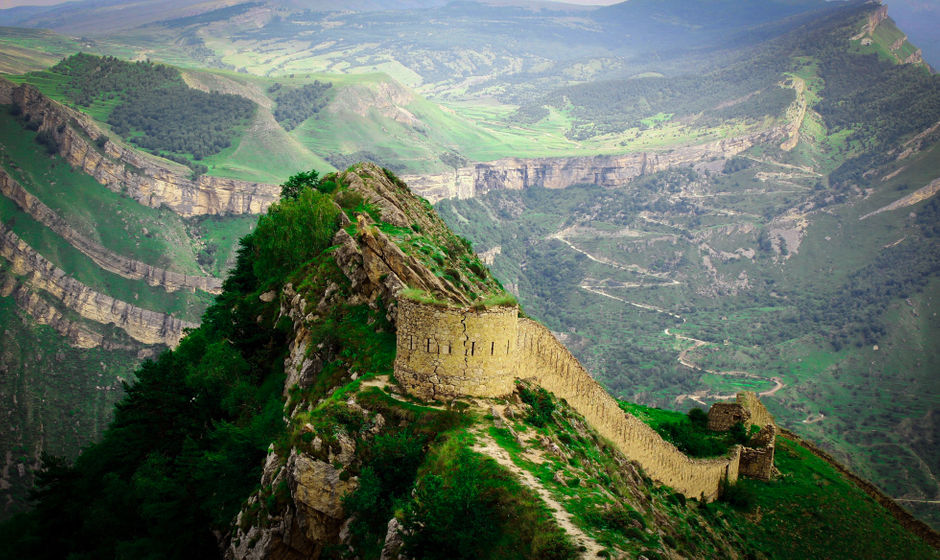
One of the most picturesque places in Dagestan is the Gunib plateau. There is always a lot of sun and almost no wind and fog. Pines and a rare variety of birch, which can only be found in the Caucasus, grow on the plateau. In the region of the Gunib plateau, there is the Karadakh gorge - a narrow and long gorge, which was formed as a result of erosion over the millennia by a small stream of limestone rock.
Near the plateau, at an altitude of 1500 meters, there is the Avar village of Gunib. Around it, in turn, are the villages of Chokh, Oboh, Megeb, Sogratl and Gamsutl. Gunib is famous for being built on the side of a mountain.
Choh
Chokh is the oldest settlement in Europe, which is about 10,000 years old, according to scientists.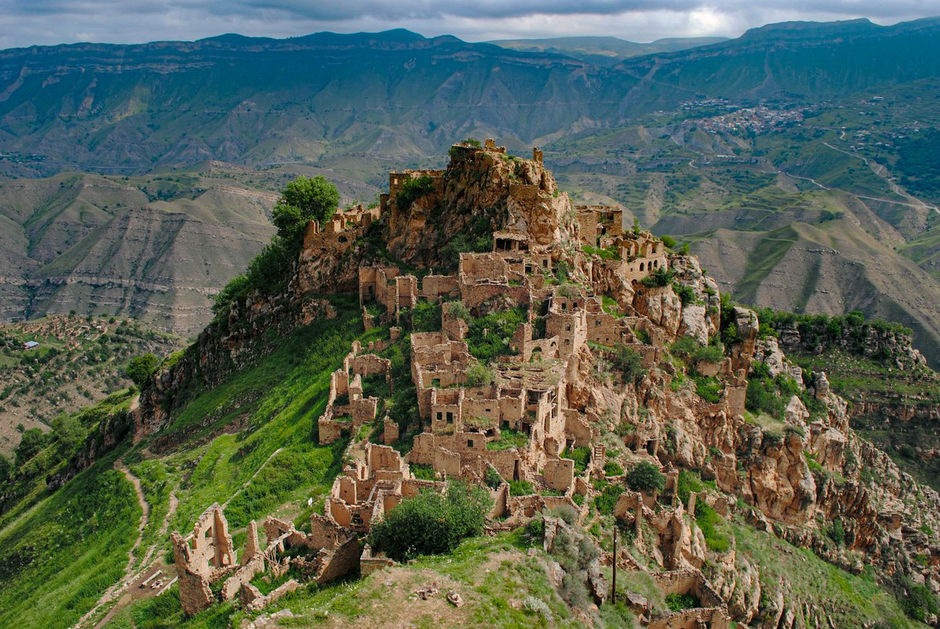
Gamsutl is an abandoned and almost forgotten village on a mountain peak. This is the most famous ghost settlement in the entire North and South Caucasus, unique in that the houses are almost built into the rock, and everything here has been preserved as if people went out somewhere and will now return. But the last inhabitant left Gamsutl 40 years ago, moving to the plain.
Aul Gunib
And the village of Gunib is known for the ruins of the Gunib fortress built by Russian soldiers during the Caucasian War on its territory. It was in this place that Imam Shamil was captured. One of the walls of the fortress is perfectly preserved (about 3 km long and 5-7 m high) and ends with a precipice into the abyss. Every kilometer in the wall holes are made for loopholes, and the corner creases are fixed by towers, which have been badly damaged by time and weather factors.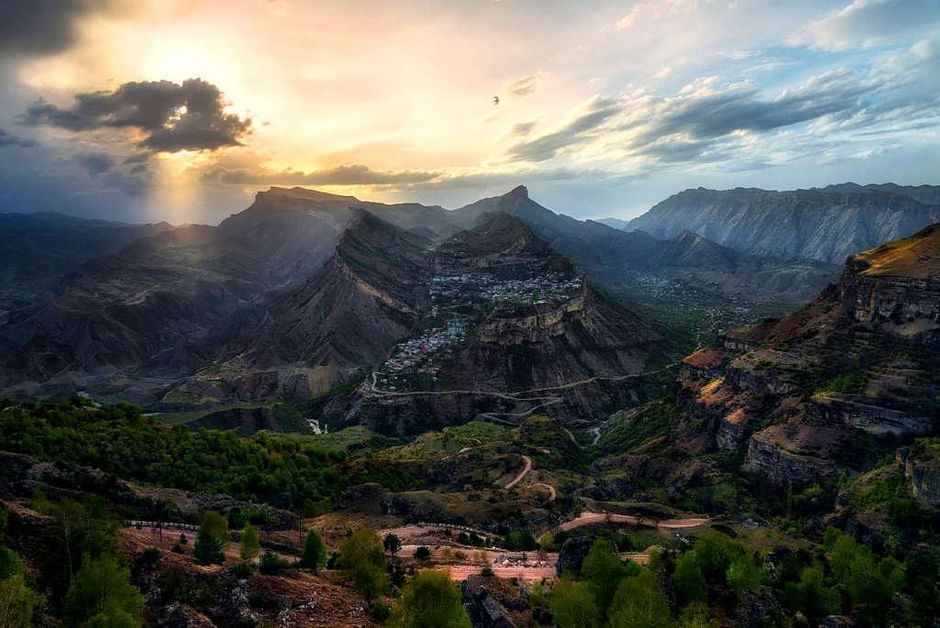
Decorative art plays an important role in the artistic life of Dagestan. In many villages there are craft workshops where they create, literally, masterpieces. Highlanders in these places still follow ancient Muslim laws and guard ancient secrets. This conservative region is a living ethnographic open-air museum.
Aul Kubachi
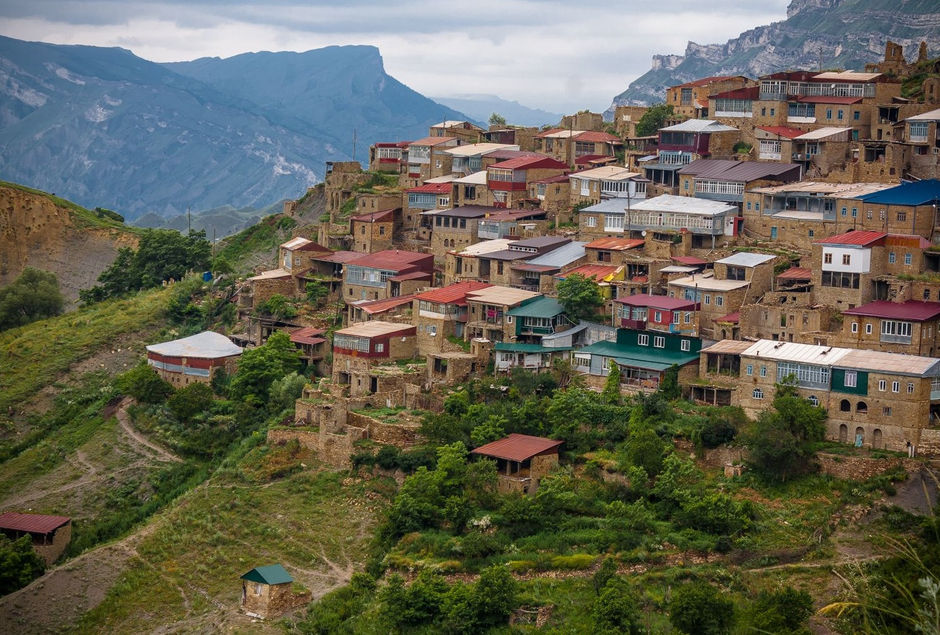
The largest handicraft center is the Kubachi village, where residents are engaged in jewelry, weaponry, wood and metal processing. Women in Kubachi always wear white shawls with gold embroidery, almost all men are master jewelers. Silver jewelry is characterized by a tinted surface, an embossed pattern, gilded notches, colored enamel, inlaid with semi-precious stones or bone. If you wish, you can get a master class from local craftsmen.
Gotsatl village
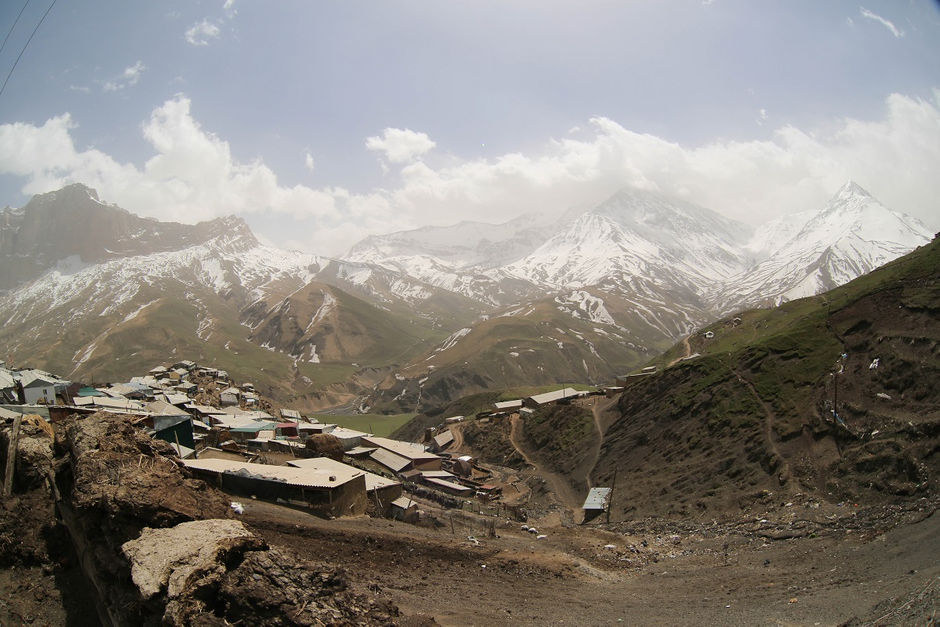
The village of Gotsatl has been known as a copper smelting center since the 17th century: local craftsmen made here boilers, water vessels and household items. In the 18-19 centuries, silver jewelry was minted here, and later swords, daggers, pistols.
Archaeological finds indicate that carpets in Dagestan were made already in the Bronze Age. For dyeing the wool, the craftswomen used natural dyes. Today, Dagestan carpets are considered the best in the world, along with Persian, Tajik and Indian.
Kala Koreish
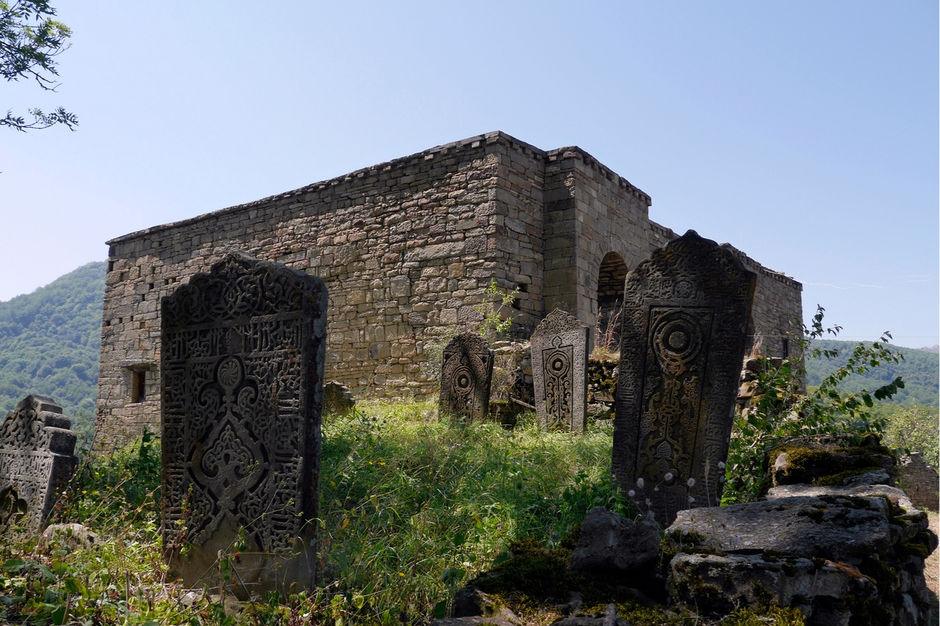
Kala-Koreish is an important historical and cultural monument of the Republic of Dagestan, located a few kilometers from the village of Kubachi. For several centuries, Kala-Koreish was the capital of a great feudal kingdom, an administrative and cultural center, as well as a starting point for the spread of Islam in the North Caucasus. Many medieval monuments in the region are abandoned. The ruins of palaces, mausoleums and tombstones of the Kala-Koreish mosque of the 9th century have been preserved, they are decorated with Islamic paintings, the texts and carvings of which resemble the works of Kubachi jewelers.
Christian shrine in the village of Datuna
The Christian shrine in the village of Datuna was built in the 10-11 centuries. The church is located in the valley of a mountain river and is surrounded on all sides by gloomy rocks, but it looks extremely bright, thanks to the golden-yellow stones of the building, which sharply distinguish the sanctuary against the background of the stormy surrounding nature.Aul Kurush

Aul Kurush is the highest mountain settlement in Europe - 2560 m. And the southernmost in Russia. Behind Kurush rises the Shalbuzdag peak, more than 4000 meters high, the ascent of which, according to local legend, clears all sins.
The high-mountainous village of Rakhata, rarely visited by tourists, is known for its unique water mill, created according to old technologies. With its help, local residents make Urbech - Dagestan Nutella from ground flax and apricot seeds. The delicacy is prepared for own consumption and for sale.

Khunzakh is the largest Avar village, the ancient capital of the Avar Khanate, with the highest waterfalls in Dagestan, falling into the Tsolotl canyon. The village is famous for the ancient mosque of Abu Muslim, named after the sheikh of the same name, buried in the sanctuary, and ancient cemeteries, where the graves of famous Islamic scholars became places of worship - ziyarats.
All villages have guest houses with an unforgettable ethnic setting: hand-woven carpets and bedspreads, whitewashed walls, beautiful handmade furniture, embroidered pillows and curtains. All this fascinates tourists and travelers. The locals are famous for their hospitality and cordiality, and they will gladly invite a tourist to a local holiday or wedding.
The high-mountainous village of Rakhata, rarely visited by tourists, is known for its unique water mill, created according to old technologies. With its help, local residents make Urbech - Dagestan Nutella from ground flax and apricot seeds. The delicacy is prepared for own consumption and for sale.
Khunzakh

Khunzakh is the largest Avar village, the ancient capital of the Avar Khanate, with the highest waterfalls in Dagestan, falling into the Tsolotl canyon. The village is famous for the ancient mosque of Abu Muslim, named after the sheikh of the same name, buried in the sanctuary, and ancient cemeteries, where the graves of famous Islamic scholars became places of worship - ziyarats.
Arani
In the village of Arani, there is the famous Aranin fortress built in 1867, well preserved to this day. The total area is 3 hectares. Once the Emperor Alexander III spent the night there, and now there is a military town for border guards.All villages have guest houses with an unforgettable ethnic setting: hand-woven carpets and bedspreads, whitewashed walls, beautiful handmade furniture, embroidered pillows and curtains. All this fascinates tourists and travelers. The locals are famous for their hospitality and cordiality, and they will gladly invite a tourist to a local holiday or wedding.

No matter how many countries you have seen, Dagestan will forever remain in your heart. The Caucasus fascinates and surprises with its grandiose mountain range, alluring the Caspian Sea, boundless cordiality and hospitality, respect for elders, customs, traditions, fiery lezginka and other dances, and a completely different outlook on life. Time seemed to have stopped here.


